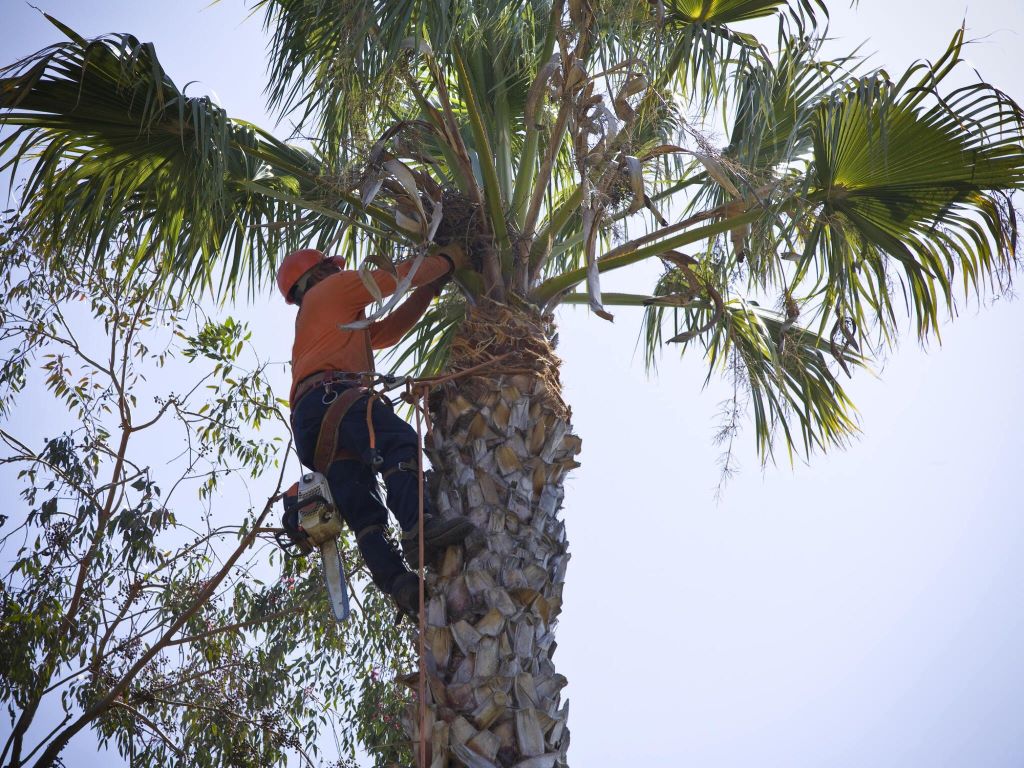Palm trees are not just iconic symbols of tropical landscapes; they also require regular maintenance to ensure their health and safety. However, the act of trimming palm trees isn’t just about aesthetics and landscaping—it involves legal considerations and regulations. This article delves into the intricate framework that governs the trimming of these majestic trees.
Additionally, staying informed about evolving legal requirements and industry best practices is essential for palm tree service providers to maintain their competitive edge. Regular training and professional development can help keep workers up-to-date with the latest regulations and techniques, ensuring that palm tree trimming activities are carried out efficiently and responsibly.
Understanding Legal Frameworks
Mr. Tree Las Vegas offers professional palm tree trimming services in compliance with local regulations and legal requirements. Adhering to legal regulations is vital to prioritize safety for workers and the community, as well as to uphold the well-being and visual charm of palm trees.
Our team is well-versed in the specific laws and regulations governing tree care in the Las Vegas area, allowing us to provide efficient and responsible trimming services while adhering to all applicable guidelines.
In many areas, tree trimming regulations aim to protect both the trees themselves and the surrounding environment. These regulations typically cover aspects such as permissible trimming practices, required permits, environmental considerations, and safety standards.
Furthermore, fostering strong relationships with local authorities and stakeholders can facilitate smoother operations for palm tree service providers.
By collaborating with municipal agencies, environmental organizations, and community groups, service providers can gain valuable insights, access resources, and build goodwill within the community.

Compliance and Permits
Before engaging in palm tree trimming activities, it’s essential for service providers to obtain the necessary permits and approvals. Permits may be required to ensure that the proposed trimming activities comply with local regulations and do not pose a threat to the environment or public safety.
Permit requirements often vary depending on factors such as the size of the palm trees, the extent of trimming needed, and the location of the trees. Service providers must familiarize themselves with the specific permit requirements in their area and ensure full compliance to avoid legal repercussions.
This may involve submitting detailed plans outlining the proposed trimming activities, demonstrating measures to mitigate potential environmental impacts, and obtaining approvals from relevant authorities. Additionally, service providers should allocate sufficient time for the permit application process, as approvals may take time to process.
By proactively addressing permit requirements, palm tree service providers can streamline their operations and uphold their commitment to legal compliance and environmental stewardship.
Environmental Considerations
Palm trees play a significant role in the ecosystem, providing habitat and sustenance for various species of birds, insects, and other wildlife. As such, any trimming activities must be carried out with careful consideration for the surrounding environment.
Legal professional guidelines for palm tree services often include provisions aimed at minimizing environmental impact. These may include timing restrictions to avoid bird nesting seasons, proper disposal of trimmings, and measures to prevent soil erosion and habitat destruction.
Ultimately, the guardianship of palm trees requires a multifaceted approach that balances the needs of the environment, the safety of workers, and the legal requirements of the industry.
Through diligence, professionalism, and a commitment to excellence, palm tree service providers can fulfill their role as stewards of these iconic trees, preserving their beauty and vitality for generations to come.
Safety Standards
In addition to environmental considerations, legal guidelines for palm tree services prioritize safety. Trimming palm trees can be hazardous work, often involving working at heights and using specialized equipment.
It is essential for service providers to adhere to strict safety standards to protect both their workers and the public. Safety regulations encompass proper worker training, utilization of personal protective equipment, and adherence to guidelines for safe equipment operation.
By following these standards, palm tree service providers can minimize the risk of accidents and injuries while carrying out their work.
Liability and Insurance
Despite taking all necessary precautions, accidents can still occur during palm tree trimming activities. Service providers must be aware of their liability and insurance obligations to protect themselves financially in case of unforeseen incidents.
In general, jurisdictions may hold service providers liable for any damages or injuries resulting from their trimming activities. Service providers must maintain adequate insurance coverage to mitigate these risks and ensure that they adequately cover any potential liabilities.

By maintaining comprehensive insurance policies, palm tree service providers can safeguard their businesses and assets against unforeseen circumstances, providing peace of mind for both themselves and their clients.
To mitigate these risks, service providers must maintain adequate insurance coverage. This typically includes general liability insurance, which covers third-party bodily injury and property damage claims. Additionally, workers’ compensation insurance is crucial to protect employees in case of work-related injuries or illnesses.
Having comprehensive insurance coverage not only safeguards the business but also provides peace of mind to clients. It assures them that they won’t be held financially responsible for any accidents that may occur during the trimming process. Therefore, reputable palm tree trimming services prioritize insurance as a fundamental aspect of their operations.
Conclusion
“Guardians of the Palms: Legal Guidelines for Palm Tree Services” underscores the importance of operating within the bounds of the law when providing palm tree trimming services.
Service providers can ensure that they carry out their activities safely, responsibly, and in compliance with regulations by understanding and adhering to legal frameworks.




